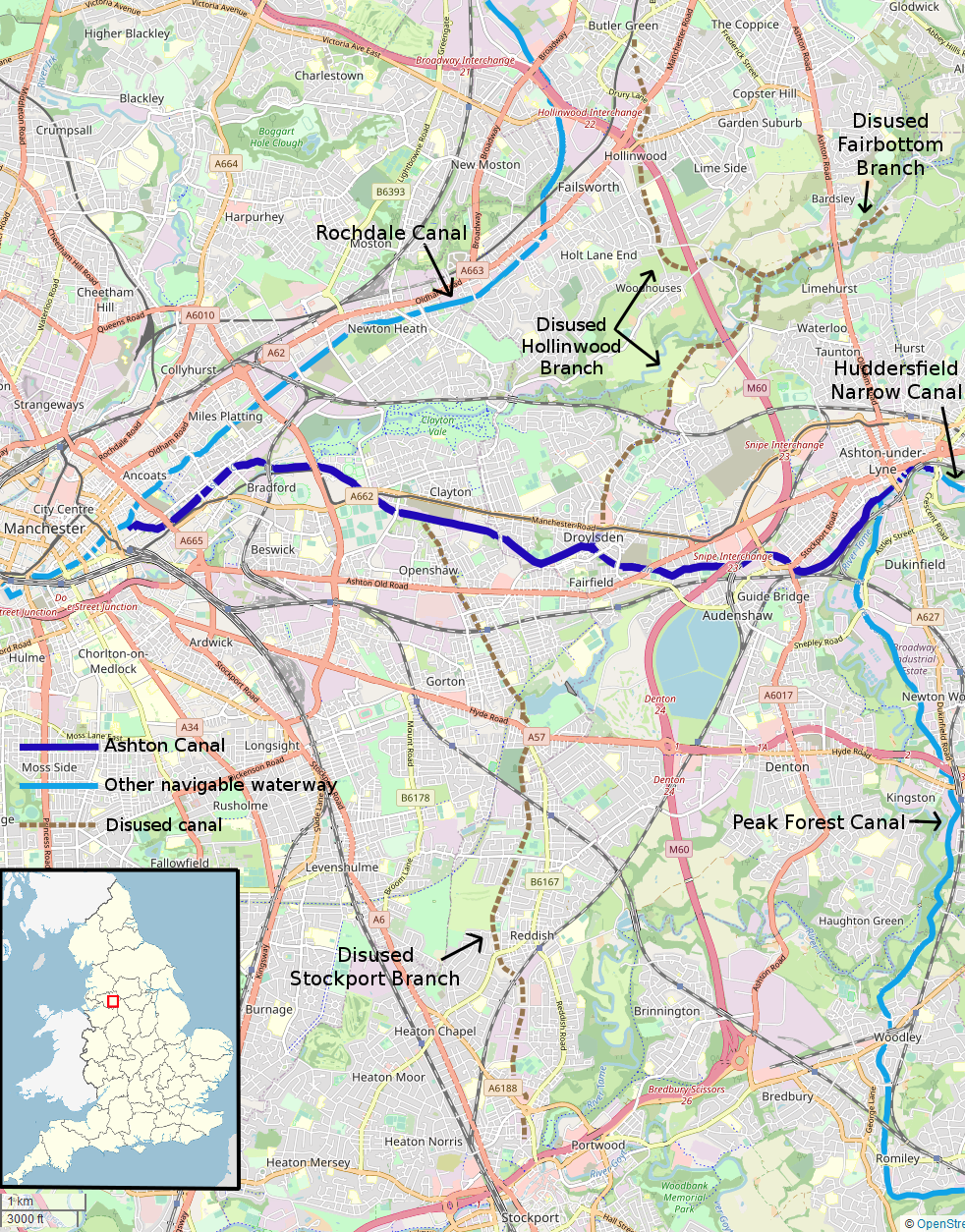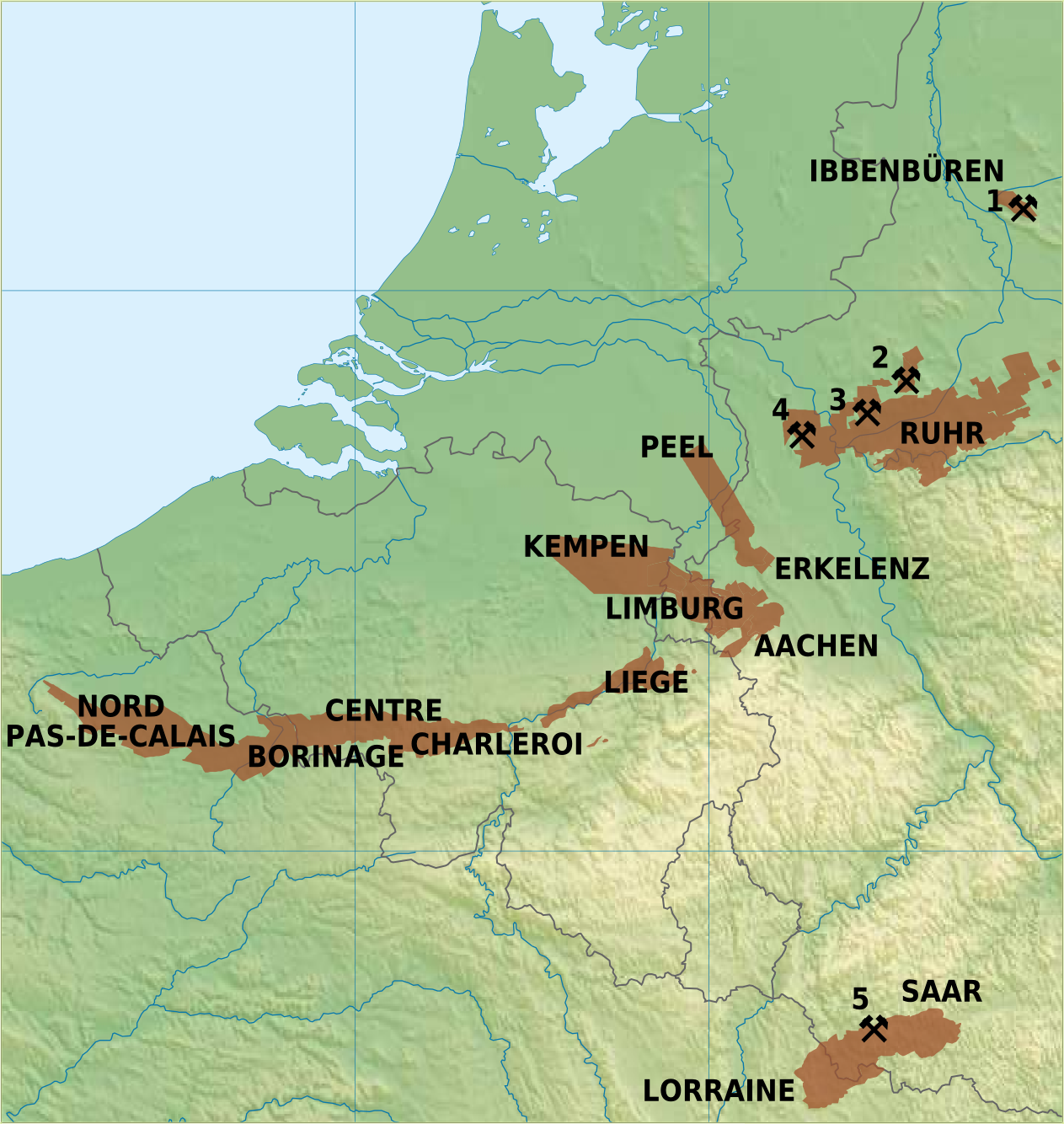|
Denton, Greater Manchester
Denton is a town in Tameside, Greater Manchester, England, five miles (8 km) east of Manchester city centre. Historically part of Lancashire, it had a population of 36,591 at the 2011 Census. History Toponymy Denton probably derives its name from Dane-town, an etymology supported by other place names in the area such as Danehead-bank and Daneditch-bourne. The word 'Dane' is itself derived from Anglo-Saxon ''denu'', ''dene'', ''daenland'', meaning a valley. So literally Denton means valley town. Prehistory A Byzantine coin was discovered in Danesheadbank, dating from the sixth or seventh century, as part of the Denton coin hoard. The early medieval linear earthwork Nico Ditch passes through Denton; it was probably used as an administrative boundary and dates from the 8th or 9th centuries. A 300 m stretch is still visible on Denton golf course, about 4 m wide and 1.5 m deep. Middle Ages In the early 13th century it lay within the Manor of Withington, a f ... [...More Info...] [...Related Items...] OR: [Wikipedia] [Google] [Baidu] |
Tameside
The Metropolitan Borough of Tameside is a metropolitan borough of Greater Manchester in England. It is named after the River Tame, Greater Manchester, River Tame, which flows through the borough, and includes the towns of Ashton-under-Lyne, Audenshaw, Denton, Greater Manchester, Denton, Droylsden, Dukinfield, Hyde, Greater Manchester, Hyde, Mossley and Stalybridge. Its western border is approximately east of Manchester city centre. Tameside is bordered by the metropolitan boroughs of Metropolitan Borough of Stockport, Stockport and Metropolitan Borough of Oldham, Oldham to the south and north respectively, the city of Manchester to the west and the borough of High Peak, Derbyshire, High Peak in Derbyshire to the east across Longdendale. the overall population was 219,324. It is also the 8th-most populous borough of Greater Manchester by population. The history of the area extends back to the Stone Age. There are over 300 listed buildings in Tameside and three Scheduled Ancien ... [...More Info...] [...Related Items...] OR: [Wikipedia] [Google] [Baidu] |
Burnage
Burnage is a suburb of the city of Manchester in North West England, about south of Manchester city centre and bisected by the dual carriageway of Kingsway. Within the boundaries of the historic county of Lancashire, the population of the Burnage Ward at the 2011 census was 15,227. It lies between Withington to the west, Levenshulme to the north, Heaton Chapel to the east and Didsbury and Heaton Mersey to the south. History Toponymy The name Burnage is thought to have stemmed from "Brown Hedge", from the old brown stone walls or "hedges" which were common there in medieval times. In a survey of 1320, the district is referred to as "Bronadge". Middle Ages During the Middle Ages, Burnage was an area of common pasture and marsh land. Burnage did not have its own manor but the land was shared between the farmers from the Manors of Withington and Heaton Norris as it was a border district between two neighbouring lordships. A survey of 1320 records 356 acres of common pasture ... [...More Info...] [...Related Items...] OR: [Wikipedia] [Google] [Baidu] |
Stockport Branch Canal
The Stockport Branch Canal was a 5-mile (8 km) branch of the Ashton Canal from Clayton, Manchester, Clayton to Stockport. Route The canal left the main line of the Ashton Canal at Stockport Junction (otherwise Clayton Junction), between locks 10 and 11 at Clayton, Manchester, Clayton, and it terminated at Stockport Basin just beyond the top of Lancashire Hill. It was just less than five miles long (7.87 km) and it was lock free. It went through Gorton, Abbey Hey and Reddish and it opened for trade in 1797. At Reddish, it was intended that a further branch (the Beat Bank Branch Canal) would be built, and work actually began on construction of this branch. Only an isolated section of that branch was ever built, and it never connected with the Stockport Branch. Features The canal was for the most part urban, being heavily industrialised along most of its length. Between Clayton and Gorton there was a heavy concentration of engineering factories and ironworks as well as ... [...More Info...] [...Related Items...] OR: [Wikipedia] [Google] [Baidu] |
Beat Bank Branch Canal
The Beat Bank Branch Canal was an abortive canal near Manchester, England. It was to leave the Stockport Branch Canal in South Reddish and it was to be lock free but with a short tunnel. It was to follow the contour above the right bank of the River Tame, firstly in a northerly direction and then easterly as it followed the meandering course of the river upstream. It was to terminate at or near to the coalmining hamlet of Beat Bank in Denton where it could also secure supplies of coal from nearby mines at Haughton Green. History The Stockport Branch Canal and the Beat Bank Branch Canal were both authorised by an Act of Parliament obtained by the Proprietors of the Ashton Canal in March 1793, just nine months after the Act which authorised the main line of the canal. This second Act also authorised the Hollinwood Branch Canal, and allowed the Proprietors to raise £30,000 to fund the construction of all three branches. The Hollingwood branch opened in late 1796, and the Stockpo ... [...More Info...] [...Related Items...] OR: [Wikipedia] [Google] [Baidu] |
1926 United Kingdom General Strike
The 1926 general strike in the United Kingdom was a general strike that lasted nine days, from 4 to 12 May 1926. It was called by the General Council of the Trades Union Congress (TUC) in an unsuccessful attempt to force the British government to act to prevent wage reductions and worsening conditions for 1.2 million locked-out coal miners. Some 1.7 million workers went out, especially in transport and heavy industry. The government was well prepared, and enlisted middle class volunteers to maintain essential services. There was little violence and the TUC gave up in defeat. Causes From 1914 to 1918, the United Kingdom participated in World War I. Heavy domestic use of coal during the war depleted once-rich seams. Britain exported less coal during the war than it would have in peacetime, allowing other countries to fill the gap. This particularly benefited the strong coal industries of the United States, Poland, and Germany. In the early 1880s, coal production was ... [...More Info...] [...Related Items...] OR: [Wikipedia] [Google] [Baidu] |
Tramway (industrial)
Tramways are lightly laid rail transport, railways, sometimes with the wagons or carriages moved without locomotives. Because individual tramway infrastructure is not intended to carry the weight of typical standard-gauge railway equipment, the tramways over which they operate may be built from less substantial materials. Tramways can exist in many forms; sometimes just tracks temporarily placed on the ground to transport materials around a factory, mine or quarry. Many, if not most, use narrow-gauge railway technology. The trains can be manually pushed by hand, pulled by animals (especially horses and mules), cable hauled by a stationary engine, or use small, light locomotives. The term is not in use in North America but in common use in the United Kingdom, and elsewhere, where British Railway terminology and practices had large influences on management practices, terminology, and railway cultures such as Australia, New Zealand, and those parts of Asia that consulted with Bri ... [...More Info...] [...Related Items...] OR: [Wikipedia] [Google] [Baidu] |
Stockport
Stockport is a town and borough in Greater Manchester, England, south-east of Manchester, south-west of Ashton-under-Lyne and north of Macclesfield. The River Goyt and Tame merge to create the River Mersey here. Most of the town is within the boundaries of the historic county of Cheshire, with the area north of the Mersey in the historic county of Lancashire. Stockport in the 16th century was a small town entirely on the south bank of the Mersey, known for the cultivation of hemp and manufacture of rope. In the 18th century, it had one of the first mechanised silk factories in the British Isles. Stockport's predominant industries of the 19th century were the cotton and allied industries. It was also at the centre of the country's hatting industry, which by 1884 was exporting more than six million hats a year; the last hat works in Stockport closed in 1997. Dominating the western approaches to the town is Stockport Viaduct. Built in 1840, its 27 brick arches carry the mai ... [...More Info...] [...Related Items...] OR: [Wikipedia] [Google] [Baidu] |
Guide Bridge
Guide Bridge is an area west of Ashton-under-Lyne, in Tameside, Greater Manchester, England. Historically part of Lancashire, Guide Bridge was built as a village around an eponymous bridge over the Ashton Canal. History Industries included Scott & Hodgson Ltd which had an engine shop near Guide Bridge railway station. In later years it was occupied by "Arnfields", makers of Mono-Pumps. Guide Bridge is located on the Ashton Canal, and later on the Sheffield, Ashton-Under-Lyne and Manchester Railway. These were used for the transportation of raw materials and the delivery of parts of the finished engines. Guide Bridge was the home of the Jones Sewing Machine Company. Governance Since the Reform Act 1832, Guide Bridge has been represented in the House of Commons of the United Kingdom as part of the Ashton-under-Lyne parliamentary constituency. The constituency was initially represented in the House of Commons by members of the Liberal Party until a period of Conservative Party do ... [...More Info...] [...Related Items...] OR: [Wikipedia] [Google] [Baidu] |
London & North Western Railway
The London and North Western Railway (LNWR, L&NWR) was a British railway company between 1846 and 1922. In the late 19th century, the L&NWR was the largest joint stock company in the United Kingdom. In 1923, it became a constituent of the London, Midland and Scottish (LMS) railway, and, in 1948, the London Midland Region of British Railways: the LNWR is effectively an ancestor of today's West Coast Main Line. History The company was formed on 16 July 1846 by the amalgamation of the Grand Junction Railway, London and Birmingham Railway and the Manchester and Birmingham Railway. This move was prompted, in part, by the Great Western Railway's plans for a railway north from Oxford to Birmingham. The company initially had a network of approximately , connecting London with Birmingham, Crewe, Chester, Liverpool and Manchester. The headquarters were at Euston railway station. As traffic increased, it was greatly expanded with the opening in 1849 of the Great Hall, designed by P ... [...More Info...] [...Related Items...] OR: [Wikipedia] [Google] [Baidu] |
Coalfield
A coalfield is an area of certain uniform characteristics where coal is mined. The criteria for determining the approximate boundary of a coalfield are geographical and cultural, in addition to geological. A coalfield often groups the seams of coal, railroad companies, cultural groups, and watersheds and other geographical considerations. At one time the coalfield designation was an important category in business and industrial discussions. The terminology declined into unimportance as the 20th century progressed, and was probably only referred to by a few small railroads and history buffs by the 1980s. Renewed interest in industrial heritage and coal mining history has brought the old names of the coalfields before a larger audience. Australia New South Wales *Gunnedah Basin coalfields *Hunter Valley coalfields *South Maitland coalfields *Sydney Basin coalfields Queensland *Bowen Basin coalfields *Galilee Basin coalfields *Surat Basin coalfields *Walloon coalfields Victoria ... [...More Info...] [...Related Items...] OR: [Wikipedia] [Google] [Baidu] |
Denton Greater Manchester From The Air
Denton may refer to: Places In England * Denton, Cambridgeshire, part of Denton and Caldecote * Denton, County Durham * Denton, East Sussex * Denton, Gravesham, part of the town of Gravesend, Kent * Denton, Greater Manchester * Denton, Kent, a village near Canterbury * Denton, Lincolnshire * Denton, Newcastle upon Tyne * Denton, Norfolk * Denton, Northamptonshire, South Northamptonshire * Denton, North Yorkshire * Denton, Oxfordshire * Denton Holme, Cumbria * Upper Denton, Carlisle, Cumbria In the United States * Denton, Georgia *Denton, Kansas *Denton, Kentucky *Denton, Maryland * Denton Township, Michigan *Denton, Johnson County, Missouri *Denton, Pemiscot County, Missouri *Denton, Montana *Denton, Nebraska *Denton, North Carolina *Denton, Texas, in Denton County *Denton County, Texas Fictional places *Denton is the setting for the English TV series ''A Touch of Frost'' and the Frost novels of R. D. Wingfield *The fictional town which was the setting for ''The Rocky Horro ... [...More Info...] [...Related Items...] OR: [Wikipedia] [Google] [Baidu] |
Trilby
A trilby is a narrow-brimmed type of hat. The trilby was once viewed as the rich man's favored hat; it is sometimes called the "brown trilby" in Britain Roetzel, Bernhard (1999). ''Gentleman's Guide to Grooming and Style''. Barnes & Noble. and was frequently seen at the horse races. The traditional London hat company Lock and Co. describes the trilby as having a "shorter brim which is angled down at the front and slightly turned up at the back" compared to the fedora's "wider brim which is more level". The trilby also has a slightly shorter crown than a typical fedora design. History The hat's name derives from the stage adaptation of George du Maurier's 1894 novel ''Trilby''. A hat of this style was worn in the first London production of the play, and promptly came to be called "a ''Trilby'' hat". Its shape somewhat resembles the Tyrolean hat. Traditionally it was made from rabbit hair felt, but now is usually made from other materials, such as tweed, straw, heavyweigh ... [...More Info...] [...Related Items...] OR: [Wikipedia] [Google] [Baidu] |


_(2).jpg)





